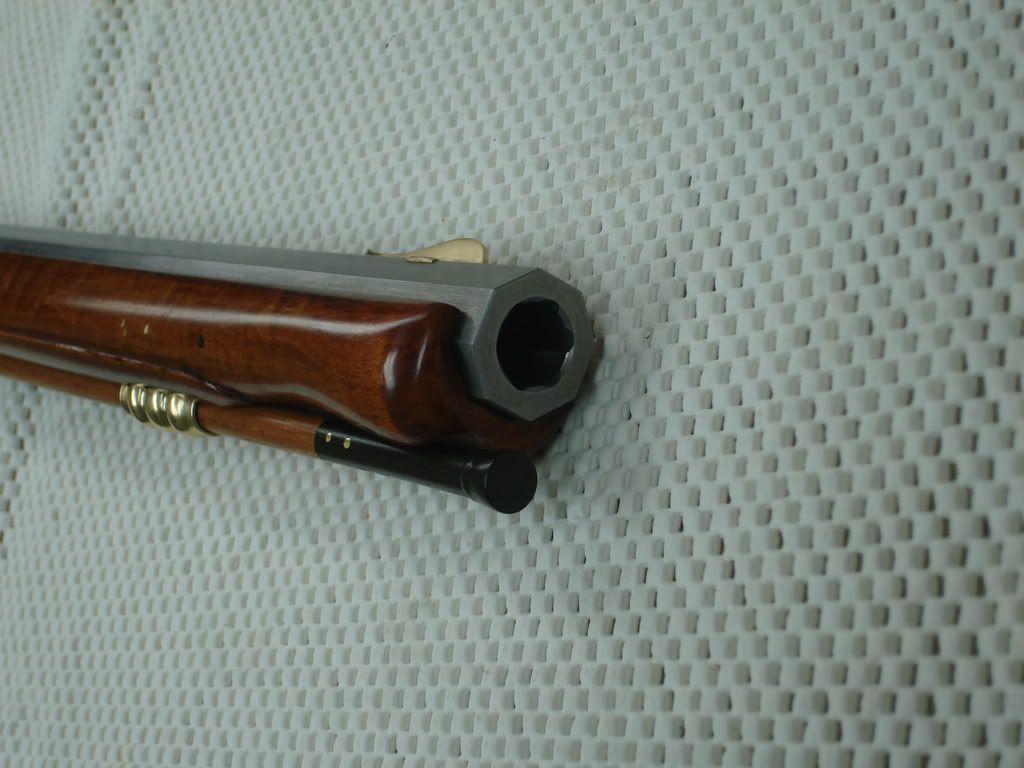I get the RR pipes on the forestock & entrypipe in, then I make sure I have the RR hole into the stock the depth I need it & insure I am clear of all obstructions (such as front lock bolts). Once the RR will go in & out easily, I get the rifle to the sanded & ready to stain condition, then I make the ramrod & put the tips on.
I sand the tips parallel with the RR as I don't like seeing circular sanding marks on the RR tips, stain the RR when I stain the stock so it matches the stock, apply the finish to the RR when I apply it to the stock.
Regardless of the finish I put on the stock, I always seal the RR with 2 thin hand rubbed coats of Tru-Oil or Permalyn to seal it after it is stained the color I want it. Then I apply more coats of whatever I am going to finish with & make it gloss, semi-gloss or dull looking to match the stock wood.
I also seal the RR hole down in the stock, inside the barrel channel & in the slots for the RR pipe lugs, barrel underlugs, lock inlet, trigger inlet, under sideplate, under buttplate, under toeplate, etc. with Tru-oil or Permalyn, and mop out any excess sealant.
To seal the RR hole I put a swab on the end of a old .22 cal RR and dip it in the sealant & swab it liberally several times turning the swab as I do it, then put a dry swab on & mop up the excess.
I would be severely ticked off if I was deer hunting & couldn't get the RR out of the stock ! :cursing:
:thumbsup:





